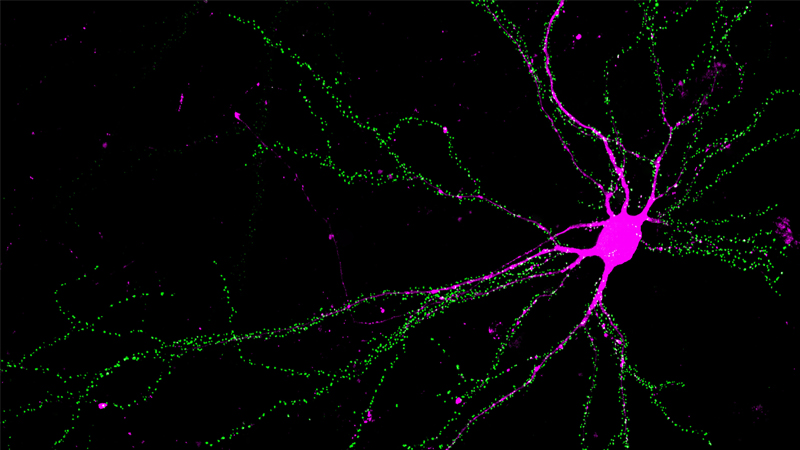Research Story Tip: One Form of Protein Key to Learning and Memory is Best Bet for Therapy Development
07/09/2020

Johns Hopkins Medicine scientists have analyzed four versions of a protein made by the gene SYNGAP to find that one of the versions is the most promising target for developing therapies to correct the gene when it is mutated. The mutated form of the SYNGAP gene contributes to conditions including intellectual disability, autism and schizophrenia.
Among DNA in human cells, a portion of about 20,000 genes churn through the process of making proteins, the tiny molecules that keep cells in working order. Each gene is coded to produce a certain protein, but depending on the cell’s stage of development, environmental stress and other factors, a gene can produce different versions of its protein, called an isoform.
The function of one isoform compared with another could be as different as night and day, and scientists have long studied these variations. However, says Richard Huganir, Ph.D., professor of neuroscience and director of the Department of Neuroscience at the Johns Hopkins University School of Medicine, the functions of SYNGAP isoforms had not been well characterized, so he and his colleagues performed the analysis and published their results in the June 24, 2020, issue of eLife.
Huganir has been studying SYNGAP since he and his research team first isolated the gene in 1998. Studying the gene has been interesting, he says, because the protein it produces is a critical part of a neuron’s communications center.
SYNGAP is a protein that regulates the structure of the contact point between two neurons, called a synapse, where brain cells trade messages. Without SYNGAP, learning and memory are impaired. According to Huganir, mutations in the gene underlie 1% of intellectual disability, and SYNGAP is among the top five genes implicated in autism. He says that it also is genetically associated with schizophrenia.
To restore SYNGAP proteins, Huganir has been working with biotechnology companies on gene therapies that can boost their production. A key step is determining which of the protein’s four isoforms researchers should target.
Huganir’s team used mouse models to show that the SYNGAP alpha 1 isoform has the most potential for creating a gene therapy that increases SYNGAP protein production in a cell. The researchers found that SYNGAP alpha 1 has the strongest presence in the synapse in a state called liquid phase transition, during which the proteins are very well organized and defined. The other isoforms of SYNGAP, the researchers report, were not as potent as the alpha 1 version.
SYNGAP alpha 1 is typically produced in larger quantities shortly after birth, when synapses are forming and maturing in the brain. It’s a critical time for learning, says Huganir.
